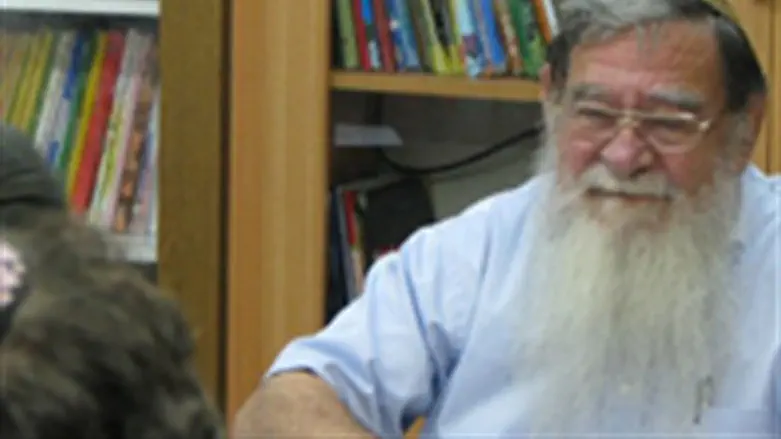
Renowned former chairman of epidemiology and public health at Ben-Gurion University, Professor Velvl Greene, who also headed the Lord Jakobovitz Center for Jewish Medical Ethics at BGU, has passed away at the age of 83.
Greene maintained an ongoing dialogue with the late Lubavitcher Rebbe, Rabbi Menachem M. Schneerson about religion and science, and how the two intersect. He held faculty positions in Israel after making aliyah in 1986, retiring just two years ago to lecture and work on his autobiography.
The professor, a resident of Be'er Sheva, was born in Winnipeg, Mannitoba to strongly secular, Zionist parents in 1928. But an encounter with a young, newly-married Chabad-Lubavitch emissary – Rabbi Moshe Feller – changed his perception of prayer one day when, during a “10-minute conversation” in his office, Feller suddenly realized the sun was setting. According to an account published in a 1972 edition of Time Magazine, Feller abruptly apologized, stopped the conversation and prayed the afternoon service, later explaining to Greene that had he not done so at that moment, “the opportunity would have been lost forever.”
Bemused and amazed, Greene began to study together with Feller, and eventually grew in his Jewish observance. When his questions reached the issue of evolution versus Creation, however, Feller referred Greene to the Rebbe, who began a science-based dialogue on the matter.
Ultimately, Greene came to realize – as he noted in one article he subsequently wrote – that science could even bring someone back to religion. “If we knew what goes on in our very own lives, if we knew what goes on in the birth of a baby, we would get on our knees an thank G-d forever. All of the vast scientific studies that have been made over the past hundred years keep pointing to the concept of order and sequence, and therefore, in my opinion, a Creator.”
Green created the first university course in environmental microbiology at the University of Minnesota following that outbreak, attracting the attention of NASA officials who worried about contamination in spacecraft by extraterrestrial microbes. In 1960 he joined the agency's Planetary Quarantine Division, assisting with NASA's search for life on Mars from a lab in Minneapolis.
The professor published more than 90 scientific papers and monographs, lecturing in various venues around the world. More than 30,000 students completed his courses in personal and community health. Tens of thousands of others tuned in to his early morning show on public television.